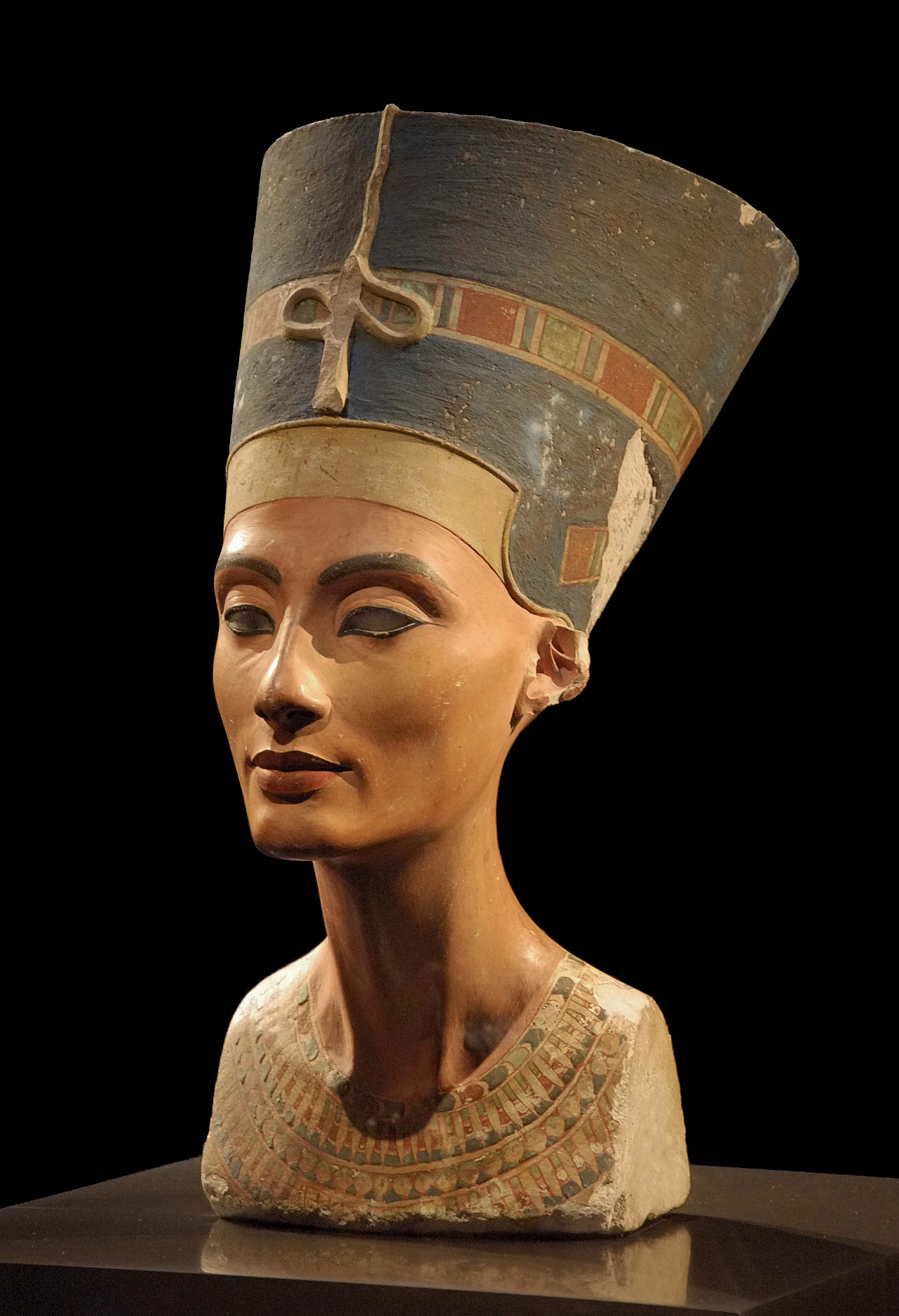Akhenaten's royal family and negative side of his revolution
Akhenaten's royal family formally consisted of the Pharaoh himself, Nefetiti, who was known as ‘great king’s wife’ (http://www.bbc.co.uk/history/ancient/egyptians/akhenaten_01.shtml) and the couple’s six daughters. Additionally, ‘There were also other wives, including the enigmatic Kiya who may have been the mother of Tutankhamun. Royal women play an unusually prominent role in the art of the period and this is particularly true of Nefertiti who is frequently depicted alongside her husband' (ibid). In visual art during Akhenaten’s reign, ‘The royal family are shown with elongated skulls and pear-shaped bodies with skinny torsos and arms but fuller hips, stomachs and thighs’ (ibid). Furthermore, it is said that ‘Although formal scenes of the king worshipping remain important there is an increasing emphasis on ordinary, day-to-day activities which include intimate portrayals of Akhenaten and Nefertiti playing with their daughters beneath the rays of the Aten… While traditional Egyptian art tends to emphasise the eternal, Amarna art focuses on the minutiae of life… Even official inscriptions changed, moving away from the old-fashioned language traditional to monumental texts to reflect the spoken language of the time (ibid). In summary, it can be said that ‘Like no pharaoh before or after him, Akhenaten was family-oriented’ (http://www.usu.edu/markdamen/1320Hist&Civ/chapters/10AKHEN.htm). In architectural findings, Akhenaten’s emphasise on the role of royal family ‘as intermediary between the Aten and the people’ (http://www.telegraph.co.uk/culture/art/10561090/Akhenaten-mad-bad-or-brilliant.html) could be culminated in ‘one of his palaces at Amarna (that) was designed with a special balcony known as the “window of appearances”’ (ibid).
 |
| Nefetiti |
However, in terms of popular support for Akhenaten’s religious reform and political revolution, it should be pointed out that ‘Recent discoveries at Amarna… suggest that Akhenaten’s cult of the Aten was not as successful as he might have hoped (ibid). It is said that excavating of the el-Amarna site shows some counter evidences for Akhenaten’s revolution as it follows: ‘More than two thirds of these workers (engaged in building palaces and temples) were dead before they were 35 years old. Moreover, ...(the excavation shows) a surprising absence among the grave goods buried in the cemetery. There were lots of amulets and votive objects depicting popular minor deities… “But there is not a single representation of the sun disc at this cemetery, nor mention of Akhenaten on finger rings or scarabs or anything,”’ (ibid). Negative impact of Akhenaten’s revolution doesn't seem to be limited to his domestic subjects. There is a letter of complaints ‘found among the remains of Akhetaten’ (http://www.usu.edu/markdamen/1320Hist&Civ/chapters/10AKHEN.htm) relating to Akhenaten’s open-air sun worship. In which, it is said that ‘the Assyrian king complains that the emissaries he sent to Egypt nearly died of sunstroke when they were attending some royal ceremony at the pharaoh’s capital’ (ibid).
For reading the text in full: http://wrex2009.wordpress.com/2014/06/01/akhenaten/

No comments:
Post a Comment